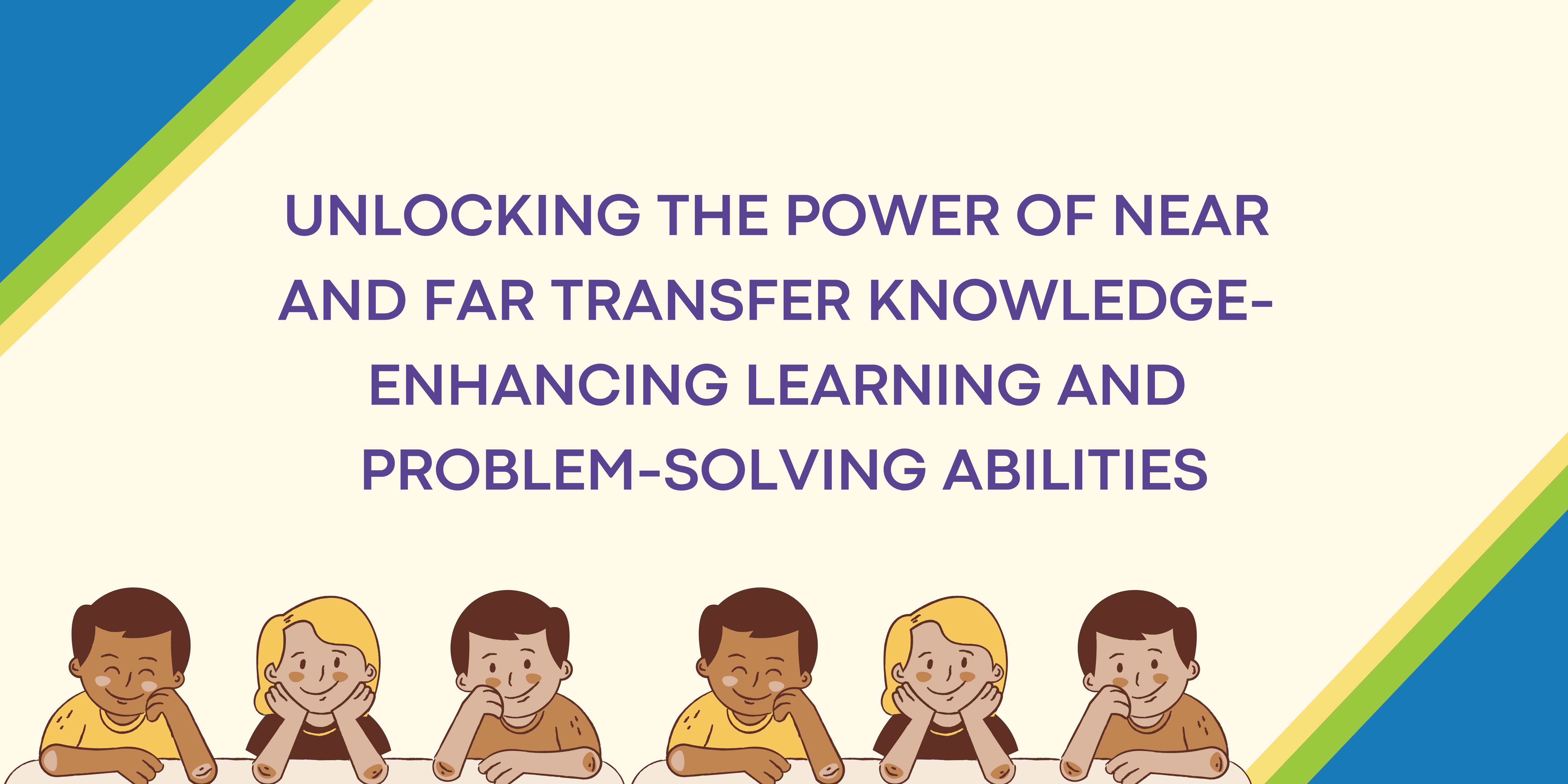
Introduction:
In the world of education and cognitive development, the concepts of near and far transfer knowledge play a crucial role in shaping how individuals acquire new skills and apply them in various contexts. Near transfer refers to the ability to apply learned knowledge or skills to similar or closely related situations, while far transfer involves the application of knowledge or skills to different or more distantly related scenarios. Understanding and harnessing these concepts can significantly enhance our learning capabilities and problem-solving skills. In this blog post, we will explore the fascinating applications of near and far transfer knowledge and how they can contribute to personal and professional growth.
1. Near Transfer Knowledge:
Near transfer knowledge refers to the application of learned skills or knowledge in similar or closely related contexts. It involves using existing knowledge or skills to perform tasks that bear a strong resemblance to the original learning context. For example, using mathematical principles learned in school to solve similar mathematical problems.
a. Problem-Solving Skills: When individuals encounter new problems that resemble those they have previously solved, near transfer knowledge allows them to apply familiar strategies and approaches. For example, a math student who has mastered solving algebraic equations can readily apply their skills to solve similar types of equations.
b. Language Learning: Learning multiple languages becomes easier when individuals can transfer vocabulary, grammar rules, and sentence structures from one language to another. Near transfer knowledge enables learners to recognize patterns and draw connections between different languages, facilitating faster and more efficient language acquisition.
c. Skill Transfer in Sports: Athletes often rely on near transfer knowledge to improve their performance. For instance, a tennis player who excels at serving may transfer their knowledge of the correct body mechanics and timing to other shots, such as volleys or smashes.
2. Far Transfer Knowledge:
Far transfer knowledge, on the other hand, involves the application of learned skills or knowledge in dissimilar or unrelated contexts. It requires the ability to generalize and apply knowledge in novel and diverse situations. An example would be utilizing problem-solving strategies learned in mathematics to tackle complex real-life problems or applying critical thinking skills acquired in a philosophy course to analyze ethical dilemmas in healthcare.
a. Critical Thinking and Creativity: Far transfer knowledge fosters the ability to think critically, solve complex problems, and generate creative ideas. When individuals can connect seemingly unrelated concepts or apply knowledge from one domain to another, they can approach challenges with fresh perspectives.
b. Cross-Disciplinary Learning:One way to apply near transfer knowledge is by engaging in cross-disciplinary learning. By recognizing and leveraging the similarities and connections between different fields of study, we can transfer knowledge and skills from one domain to another. For instance, drawing parallels between physics and engineering can enable us to design innovative solutions by applying principles from both disciplines.
c. Transferable Skills in the Workplace: In today’s dynamic work environment, far transfer knowledge is highly valued. Employees who can transfer skills such as communication, problem-solving, and adaptability across different projects and roles tend to thrive and contribute effectively to their organizations.
3. Strategies for Enhancing Near and Far Transfer Knowledge:
To maximize the benefits of near and far transfer knowledge, consider implementing the following strategies:
a. Metacognition and Reflection: Developing metacognitive skills and engaging in reflective thinking can enhance far transfer knowledge. By consciously analyzing our learning experiences, identifying underlying principles, and drawing connections across different domains, we can promote the transfer of knowledge to new and unfamiliar situations.
b. Interdisciplinary Learning: Encourage exposure to diverse subjects and interdisciplinary learning opportunities. Encouraging individuals to explore connections between different fields of study helps foster far transfer knowledge and promotes creative problem-solving.
c. Real-World Application: Provide opportunities for practical, hands-on experiences where individuals can apply their knowledge in authentic contexts. This approach strengthens both near and far transfer knowledge by emphasizing the application of learned concepts in real-life situations.
d. Feedback Loop: Near transfer knowledge serves as the foundation upon which far transfer knowledge is built. As individuals apply their foundational skills in different contexts, they gain new insights and refine their understanding, which, in turn, strengthens their near transfer abilities.
Conclusion:
Near and far transfer knowledge are valuable tools that can significantly enhance our learning and problem-solving abilities. By understanding the differences between these two types of knowledge and applying them appropriately, we can bridge the gap between theoretical knowledge and practical application. Whether through cross-disciplinary learning, deliberate practice, metacognition, or problem-based learning, the application of near and far transfer knowledge empowers us to navigate complex challenges, adapt to new situations, and become lifelong learners.
So, let’s embark on this journey of knowledge transfer, expanding our intellectual horizons, and unlocking the true potential of our minds!